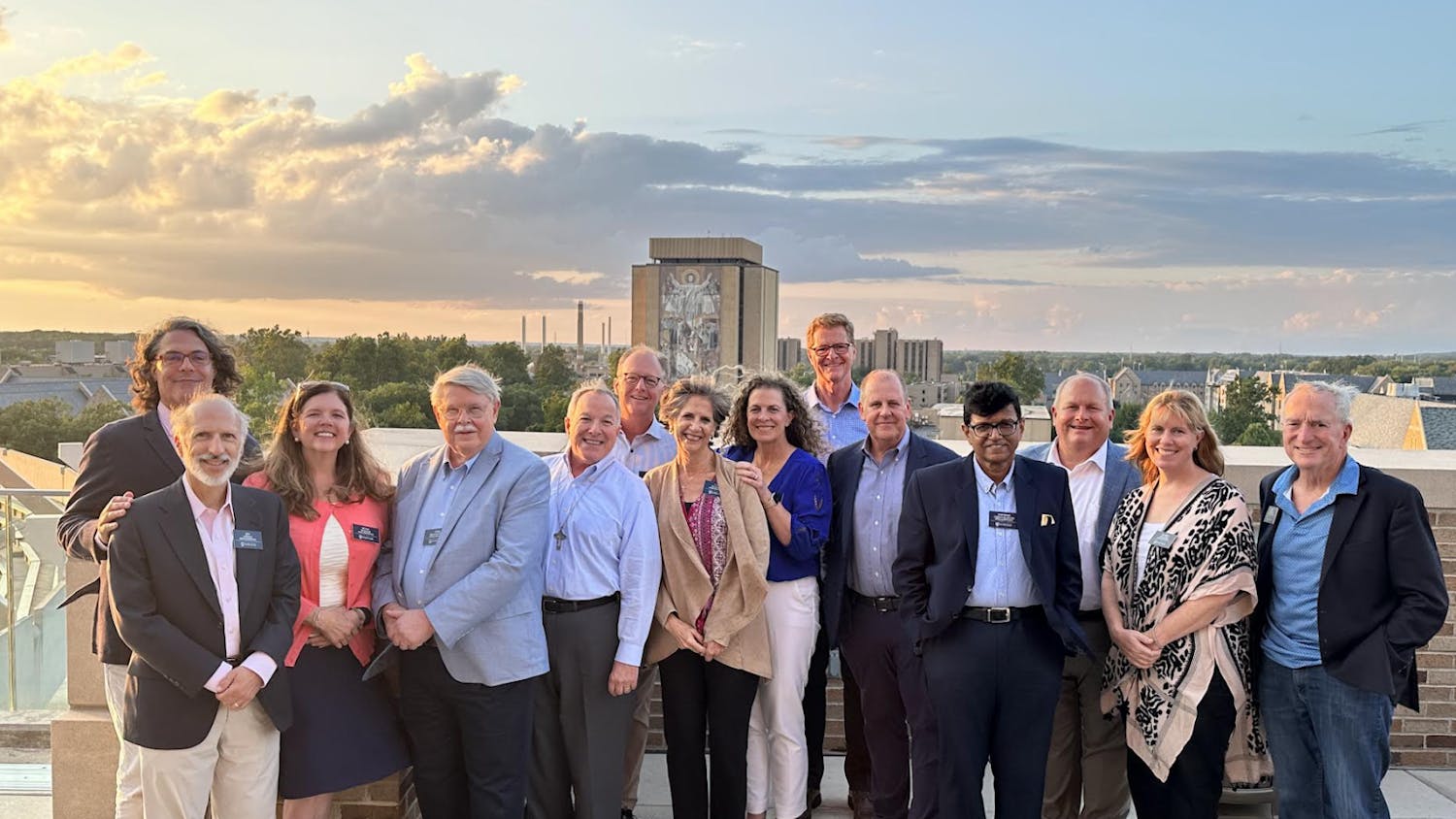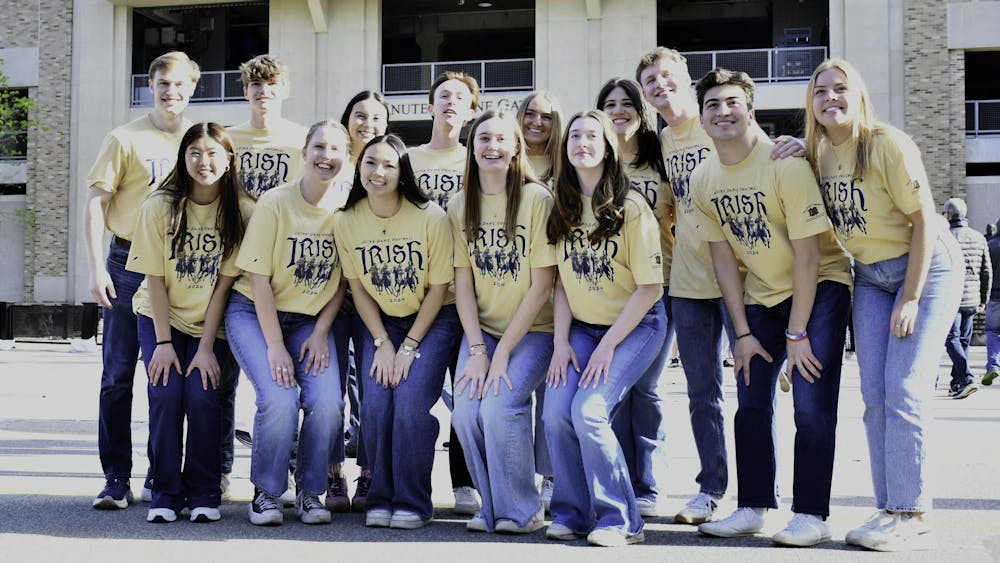When Patrick Dupre Quigley came to Notre Dame as a freshman in the fall of 1996, he was unaware that his participation in campus choral ensembles would provide him with a clear career path into music, let alone help his musical group top Lady Gaga on the iTunes charts this past summer.

"I helped found The Undertones during my freshman year and served as their music director for four years," Quigley, a 2000 Notre Dame graduate, said. "Working with that group taught me that there is a market for vocal music out there, and I realized that I wanted to be a conductor."
As a music theory major and member of The Undertones and the Glee Club, Quigley explored his interest in music and had the opportunity to travel the world as a performer during his time at Notre Dame.
"My interest in music was twofold: I really loved the music we performed, and at Notre Dame, I was able to perform in three continents and 46 states," Quigley said."I couldn't find a downside to being involved in music."

After following his interests to a master's degree in conducting from Yale University, Quigley currently serves as the founding artistic director for Seraphic Fire, a Miami-based professional choral ensemble that performs classical, renaissance, baroque and secular music.
Their recent collaboration with the Western Michigan University Chorale, Claudio Monteverdi: Vespers of the Blessed Virgin 1610, was released in August, reached the No. 1 spot on the iTunes classical charts and outsold Lady Gaga's The Fame Monster at one point.
The 64 performers who appeared on the album — including 12 members of Seraphic Fire and 40 members of the Western Michigan University Chorale — harnessed the power of the Internet and word of mouth to publicize their new album and garnered outstanding results, Quigley said.
"When the disc was released, iTunes featured it on their classical homepage," Quigley said. "From there, I tagged all the members of the ensemble in a post on Facebook, and they shared the iTunes link to the album on their Facebook pages. It got to the point where people I knew from grade school started publicizing the album, which propelled it to the Top Ten."
Quigley said this "viral moment" caught the attention of the National Public Radio program "All Things Considered," which did a segment on the group and its grassroots publicity methods. The effects of this national attention for the group were unprecedented.
"Within an hour of the program's airing, the album hit number one on the iTunes classical charts," Quigley said. "We remained on the best seller list for over a month, and one day we even beat out Lady Gaga."
Seraphic Fire's commercial success comes eight years after Quigley first became involved with the group, shortly after he completed graduate school and relocated to Miami to work as the music director for a large Catholic parish.
"While I was working at the church, I met a number of professional singers who were section leaders in one of the seven church choirs I directed," Quigley said.
Quigley and a group of eight professional vocalists initially performed three concerts as Seraphic Fire, but the group expanded significantly over the next three years to the point where Quigley could no longer direct the group as a mere side project.
During its third year of existence, Seraphic Fire was invited to record with Shakira on her album, "Oral Fixation, Vol. 2."
That same year, the group also began performing with the Miami Symphony Orchestra, and Quigley decided to commit to the group as its full-time artistic director.
"At that point, only two people worked for the group — myself and the office manager/grant writer," Quigley said. "Now the organization is much bigger and involves more performers."
A number of the group's performers were doctoral students at the University of Miami who eventually went on to become music professors or full-time professional musicians who perform with operas and symphonies or in choral ensembles around the country, Quigley said.
In fact, the members of Seraphic Fire are all professional musicians or professors, and none perform with the group full-time.
Seraphic Fire, now in its ninth season, comprises 40 members from around the country and performs about 65 concerts per season, mostly in Miami and other southern Florida metropolitan areas, Quigley said.
The group did perform in Mexico City in May, and it will travel to the Midwest twice this winter, including a concert at Notre Dame on Jan. 19.
Additionally, the group often collaborates with other ensembles in its performances and recordings, such as the Firebird Chamber Orchestra and various choral ensembles. Quigley said the group has two more albums due out within the next few months, including a Christmas recording and a disc with the Firebird Orchestra.
"Our goal for the future is to expand our recorded legacy because there's a big shift away from the traditional recording model for classical music to the new digital music economy," Quigley said. "One of the great things about our album's success is that the power of large record labels in digital distribution of classical music is diminished, but word of mouth is much more important in promoting our product in the digital world."
Quigley said the demographic of iTunes customer is generally much younger than the traditional classical music consumer, usually assumed to be affluent people over the age of 55.
The popularity of Seraphic Fire's album on iTunes leads Quigley to believe that his group has successfully "cracked the egg that is the digital music economy."
"If younger people are buying classical music on iTunes, that means that classical music is alive and well, and new audiences are being exposed to it," Quigley said. "It's incredibly heartening."












